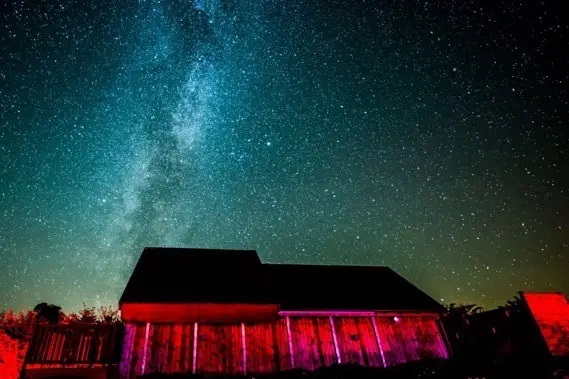
We're kicking off a new series of monthly blogs and are delighted to welcome Duncan Wise, of Northumberland National Park, as a guest blogger to launch the series.
We are extremely fortunate here in Northumberland to have the most ‘pristine dark skies’ in England, a status that was officially recognised when the combined areas of Northumberland National Park and most of Kielder Water & Forest Park (1400 km2) were designated as England’s first and largest ‘International Dark Sky Park (Gold Tier)’ by the International Dark Sky Association in 2013. Since then, Northumberland has established itself as one of the very best places to stargaze in the UK, and the income generated from those travelling to our County to look at the stars (astro-tourism) is now worth a staggering £25 million per annum to the regional visitor economy!
The opening of the award-winning Kielder Observatory in 2008 kickstarted the development of other exciting venues across Tynedale, with the opening of The Battlesteads Observatory in 2016 (shown above), Stonehaugh Observatory in 2019 and more recently, with the opening of the Twice Brewed Inn Observatory in 2020. I cannot think of any other area in the UK that has a density of public observatories as we here in our own back yard.
As well as visiting these amazing venues, you can of course stargaze from anywhere in Northumberland and you don’t necessarily need expensive telescopes to do so, just your eyes. Casting them skyward on a clear night is an amazing experience at any time of year, but the very best time is during a New Moon phase, when the skies are exceptionally dark, and the stars seem to pop out of the firmament. The next New Moon will fall on the 4th of November, so any time a week before, or a week after this date is a good time to get out there and take in the beauty of the night sky.
Two other factors are necessary for a good night’s stargazing:
These are some simple tips to prepare yourself for your evening with the stars.
If you are interested in catching sight of ‘shooting stars’ (meteors) next month, then look out for the Leonids Meteor Shower, which is expected to peak around 17th November. They are named the Leonids, as they radiate out from the Leo (Latin for Lion) constellation (use that app!), which looks a bit like a crouching lion (supposedly!). The Leonids occur each year when the Earth’s own orbit intersects the 'exhaust’ or trail of ice and dust particles left behind the Comet, Tempel-Tuttle, which is just over 2-miles across and takes 33 years to go round the sun.
Meteors are very small grains of dust (approximately the size of a peppercorn) that burn up as they enter the earth’s atmosphere, creating a characteristic streak in the sky. You really need to be sitting comfortably if you intend to look out for meteors. This is where that comfortable camping chair will come in useful.
However, like any every other natural resource, we cannot take our wonderful dark skies for granted. Light pollution from town and cities, including from Hexham, is eroding the quality of our dark skies.
There are three types of light pollution:
This is the brightening of the night sky which can be seen emanating from the horizon, originating mostly in built-up areas. It is caused by badly directed light being sent upwards and scattered by aerosols and particles in the air. It can also result from reflected light from bright surfaces like wet roads or roofs.
This is the uncomfortable brightness of a light source when viewed against a contrasting darker background. In less densely populated rural areas, glare from LED floodlights and other poorly installed lighting will seem relatively more intense than in urban areas.
Sometimes called ‘light trespass,’ this involves light spilling beyond the property or area being lit. Although this pollution generally relates to windows and intrusion into private property, the term ‘light intrusion’ also applies to light affecting nearby wildlife habitats.
Unlike other forms of pollution, light pollution can be reduced and even eliminated if we simply took the following steps* when deciding on whether we need to add any more lights to our properties or streets.
Lighting should:
*Source: International Dark Sky Association
Protecting our dark skies does not mean we turn off every electric light and pitch ourselves backwards into the 19th Century, it just requires us to think carefully about what outside lighting we need, where do we want it to shine, and how much light is actually required.
If we can follow these simple steps, then our skies will remain dark and continue to be a source of inspiration for this and future generations to enjoy.
(All images courtesy of Northumberland National Park).
Duncan Wise